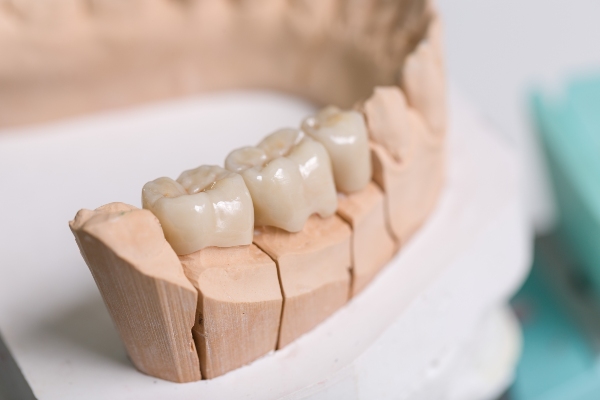 A dental bridge is a restorative option designed to replace missing teeth, improving function and appearance. Among the various types, a cantilever dental bridge is often chosen when only one supporting tooth is available on one side of the gap. Understanding the pros and cons of cantilever dental bridges helps patients determine if this solution aligns with their oral health needs.
A dental bridge is a restorative option designed to replace missing teeth, improving function and appearance. Among the various types, a cantilever dental bridge is often chosen when only one supporting tooth is available on one side of the gap. Understanding the pros and cons of cantilever dental bridges helps patients determine if this solution aligns with their oral health needs.
What Is a Cantilever Dental Bridge?
A cantilever dental bridge consists of a prosthetic tooth (pontic) attached to a single crown on an abutment tooth. This design is ideal when adjacent teeth are present only on one side of the missing tooth. The simplicity of this structure makes it suitable for specific cases, such as replacing a front tooth or when other restorative options are not viable.
Pros of Cantilever Dental Bridges
Minimally Invasive Procedure
Cantilever dental bridges are less invasive compared to implant-supported restorations, as they do not require surgery. The abutment tooth is prepared by removing a small amount of enamel to accommodate the crown, allowing for a quicker and more comfortable procedure.
Cost-Effective Solution
Cantilever bridges are generally more affordable than dental implants or other complex restorations. They provide a reliable option for patients seeking to restore their smile without significant financial investment.
Aesthetic Improvement
Cantilever dental bridges restore the appearance of a full smile, improving confidence and overall facial aesthetics. The materials, such as porcelain or ceramic, can be color-matched to blend seamlessly with natural teeth.
Cons of Cantilever Dental Bridges
Increased Stress on the Abutment Tooth
Since a cantilever dental bridge relies on a single abutment tooth for support, this tooth endures additional stress. Over time, the abutment tooth may become susceptible to damage, loosening, or decay if not properly cared for.
Limited Application
Cantilever dental bridges are unsuitable for all cases, particularly for replacing back teeth that endure significant chewing forces. Their design makes them more vulnerable to complications in areas with high bite pressure.
Potential for Imbalance
The unsupported end of a cantilever dental bridge can create an imbalance, leading to increased wear on the abutment tooth and adjacent teeth. This design requires careful planning and precise execution to minimize risks.
Maintenance and Longevity
Proper care is essential to extending the life of a cantilever dental bridge. Patients should maintain good oral hygiene, including brushing and flossing, and attend regular dental checkups. Specialized tools, such as interdental brushes or floss threaders, help clean around the bridge and prevent plaque buildup.
Discuss cantilever bridges with your dentist
Cantilever dental bridges offer a practical and cost-effective solution for replacing missing teeth in specific cases. While they provide aesthetic and functional benefits, patients should consider potential drawbacks such as added stress on the abutment tooth. Consulting with a dentist ensures patients receive a personalized treatment plan that meets their needs and promotes long-term oral health. For more information, schedule a consultation visit today at Sammamish Dental Center.
Request an appointment or call Sammamish Dental Center at 425-340-3113 for an appointment in our Issaquah office.
Related Posts
The right dental bridge can help you regain your self-esteem and dental function. But it can be challenging to determine which will help you the most. Your dentist can assist you by explaining each type. Here are the factors you should consider when choosing the most suitable dental bridge for your needs.The patient can choose…
Missing teeth can significantly impact your oral health, appearance, and confidence. Fortunately, teeth replacement options like dental bridges can help restore your smile. Dental bridges are prosthetic devices designed to bridge gaps made by one or more missing teeth, repairing the function and appearance of your smile.Dental bridges are fixed dental restorations that replace missing…
Dental bridges help restore smiles and maintain oral health by replacing missing teeth. Understanding the different types of dental bridges can help you choose the right solution for tooth loss. The following blog covers the four main types of dental bridges and their features.Traditional dental bridges are among the most common options for replacing missing…


